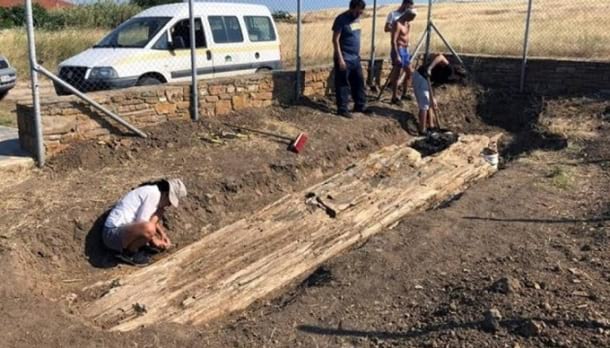The remains of a Roman-era mercenary and his decapitated victim have been discovered at an archaeological site in the Welsh Vale of Glamorgan.
Mark Collard, an archaeologist and head of the Rubicon Heritage excavation project, told Live Science that the mercenary had a “highly unusual” burial.
He added: “It is in the middle of a field near a Roman villa overlooking the valley and the sea. It’s a great place to be buried.”
The man, who is 5ft 9in and about 20 years old, appeared to be suffering from a middle ear infection that could have spread to his skull and could have caused his death.
He was buried face down in a nailed wooden coffin, which also contained boots made of hammered nails, a long iron sword, and a silver crossbow brooch.
The last two artifacts link the man to the Roman military forces of the late fourth and early fifth centuries AD.
During this period of time, as Roman control in Britain began to wane, the empire hired mercenaries to fight the invaders.
Based on his brooch, which bears a resemblance to those found in mainland Europe, the team believes the man was recruited in this way, although he could also have been an invader. The team hopes that genetic analysis will clarify the situation.
The apparent victim of this man was also about 20 years old, and he was buried with a severed head placed at his feet in a coffin or on a wooden board with a shroud draped over it.
Beheadings were not uncommon in the Roman period—accounting for two to three percent of all burials—and are believed to be associated with executions.
Perhaps, Mr. Collard said, beheading was thought to separate the soul from the body or prevent the resurrection of the deceased.
cursorinfo.co.il
Source: Yu News









